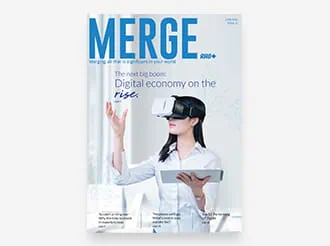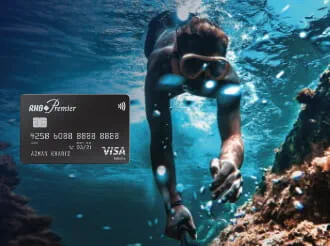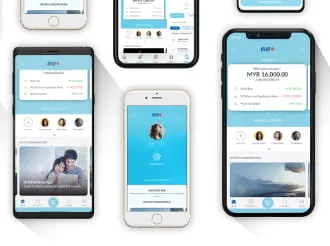What if money isn’t the REAL currency – but TIME is?
Rethinking wealth, success, and the point of it all.
Imagine this: A man dies with RM12 million in his bank account and a bucket list left mostly unchecked. Was he successful? Did he really live by making each day count instead of each ringgit?
We spend our lives sprinting on this hamster wheel of hustling, saving, and chasing the next big thing. But eventually, we realise that we’re not really living. We’re just that little hamster in a cage.
It’s not our fault. Most of us were raised on the script of study hard, get a stable job, work hard, climb the corporate ladder, buy a house, save like crazy, retire at 60. Then maybe you’ll have time to live, if you’re lucky to have saved enough. But for many folks today, that stick with the dangling carrot is getting longer and longer. Everyday life is getting expensive. Work-related stress is robbing us of our health. And time? It’s slipping through our fingers while we tell ourselves, “Work hard now, enjoy later!”
This is exactly what Bill Perkins challenges in his book, Die with Zero: Getting All You Can from Your Money and Your Life (Perkins, 2020). He argues that success shouldn’t be defined by how much money you die with, but by how fully you lived while you had the chance.
In films, the idea that time is a literal measure of value is a powerful theme. In the 2011 film In Time (yes, the one with Justin Timberlake), people stop aging at 25, but their lifespan is determined by how much time they have left, shown on a digital clock on their arm. Time is used to buy food, pay rent, or offer bribes. The concept that time is the most valuable resource isn’t that far-fetched.
The real currency is not money – it’s time.
The emotional ROI
Remember that unplanned road trip you took with your friends 20 years ago? It still makes you smile. What about that solo backpacking trip in Vietnam? It taught you more about yourself than any self-help book ever could. These experiences pay emotional returns for the rest of your life. Perkins calls these “memory dividends”. The sooner you make those experiences, the longer you’ll benefit from them. And what’s amazing is that these assets will never depreciate.
Living with intention: a roadmap for life
In a world obsessed with productivity hacks, side hustles, and Instagram-perfect milestones, it's easy to live life on autopilot — chasing goals you didn’t choose, climbing ladders you never meant to be on. Living intentionally is the exact opposite of that. It’s the art of designing your life around what actually matters to you. Who cares what other people think? It’s your life.
To live intentionally means to:
- Make conscious decisions on how you spend your time, money, and energy.
- Regularly ask yourself: Is this adding value to my life or draining it?
- Choose YOUR version of success, not the default version sold to you.
- Do what you love.
- Be present in your actions. Put down your phone and live every moment.
It’s never about chasing perfection. It’s about being aware, embracing imperfections, and aligning your daily actions with your values.
Maybe you can say no to a better paying job because you’ll have less freedom and time. Maybe you can sign up to learn something random just because you’re curious, not because you need it for your job. Maybe you can dedicate more time to painting, since you’ve long neglected your hobby. Maybe you can spend more time helping your family members, since they always say you’re too busy. Give your time, love, and help now instead of saving it all up for “someday”. Love is best expressed in the present, not through a will.
Perkins suggests dividing your life into decades (“time-buckets”) and setting goals for each one.
Ask yourself:
- What experiences make sense in your 20s? (Backpacking, starting a business, going all out on a creative dream?)
- What do I want in my 30s and 40s? (Deeper relationships, slower travel, knowing yourself better?)
- Which legacy goals matter most in your life?
Where you place your planned experiences depends on how you’ll enjoy them. For example, climbing Mount Kinabalu in your 30s is going to be a less painful experience than doing it in your 60s, post-retirement, with weaker knees.
So why aren’t most of us living life to the fullest now? There are some common reasons, and when we face them head-on, we can remove these obstacles.
- We think we have more time. We postpone joy. We say, “Next year, lah.” But let’s be honest: tomorrow isn’t guaranteed.
- Fear keeps us stuck. We over-save because of rising healthcare costs, job instability, or the fear of letting others down. We sacrifice now for a “just in case” that may never happen.
- We always want to “play it safe”. Study hard. Earn a degree. Buy a house. Keep your head down. Don’t rock the boat. But is this really what you want? What’s the prize for playing it safe?
Diversify your life capital
Think about your life as a portfolio. Just like you diversify your investments, you should diversify your life. That means making room for savings but also spending now on what matters. It’s not about being reckless and blowing all your money. It’s about being intentional.
If you’re worried about security, there are tools that can help you manage risks without delaying your joy. Bancassurance products, such as RHB Essential FlexiLink Plus and RHB Essential Protect Premier, can play a powerful and enabling role in intentional living, especially when you are trying to balance living fully today and preparing for tomorrow. Balance is key. Use RHB Goal Planner to plan your financial goal and discuss the outcome with your Relationship Manager will be happy to help you plan so you can live every moment to the fullest.
Your life balance sheet
Perkins suggests thinking about your life like a different kind of balance sheet. Not a financial one, but one that tracks:
- Time spent with loved ones
- Adventures you’ve pursued
- Wisdom you’ve shared
- Resources you’ve used with purpose
Die with nothing left wasted
The real tragedy isn’t dying broke. It’s dying with your dreams unfulfilled, your bucket list untouched, your best stories still unwritten. So maybe it’s time we stopped measuring life by our bank account and started measuring it by how we actually live.
We’ll leave you with a Perkins gem: “Live a life so full that nothing is left behind—not because it was wasted, but because it was fully used.”
Disclaimer:
Terms & Conditions apply.
This article has been prepared by RHB and is solely for your information only. This article is strictly private, confidential and personal to its recipients and should not be copied, distributed or reproduced in whole or in part, nor passed to any third party, without obtaining prior permission of RHB Bank Sdn Bhd (“RHB”). In preparing this presentation, RHB has relied upon and assumed the accuracy and completeness of all information available from public sources or which was otherwise reviewed by RHB. Accordingly, whilst we have taken all reasonable care to ensure that the information contained in this presentation is not untrue or misleading at the time of publication, we cannot guarantee its accuracy or completeness and make no representation or warranty (whether expressed or implied) and accept no responsibility or liability for its accuracy or completeness. You should not act on the information contained in this article without first independently verifying its contents.
The information contained herein is strictly meant to be as general information and does not constitute a contract of insurance. Buying a life insurance policy is a long-term financial commitment. You must choose the type of policy that best suits your personal circumstances. You should read and understand the insurance policy and discuss it with the bank staff or contact the insurance policy directly for more information. Investment-linked Plan is an insurance product that is tied to the performance of the underlying assets and is not a pure investment product such as unit trusts. You must evaluate your options carefully and satisfy yourself that the investment-linked fund(s) chosen can meet your risk appetite, and that you can afford the premium/contribution throughout the policy duration. Return on an investment fund is not guaranteed. For further details on the benefits, exclusions, and terms and conditions of the product, please refer to the Product Brochure, Sales Illustration, Product Disclosure Sheet (PDS), and policy contract. Underwritten by Tokio Marine Life Insurance Malaysia Berhad (199801001430 (457556-X), RHB is merely acting as a distributor.
Member of PIDM.
This article has not been reviewed by the Securities Commission Malaysia (SC).
RHB Bank Berhad 196501000373 (6171-M)












